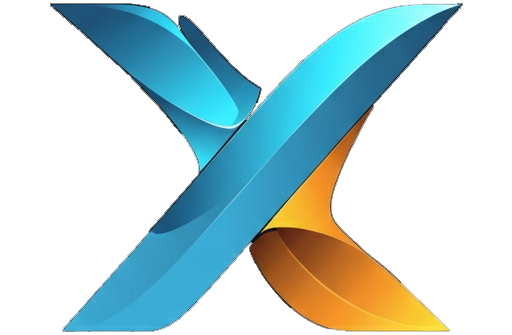Introduction
Decentralized finance (DeFi) is transforming the world of finance as we know it. By leveraging blockchain technology, DeFi eliminates intermediaries such as banks, offering a more inclusive and accessible financial system. But as with any innovation, DeFi comes with its share of risks and realities that users must understand before jumping in.
This blog explores the core principles of DeFi, its potential rewards, and the risks you need to consider. By the end, you’ll have a clearer understanding of whether DeFi aligns with your financial goals and how to approach it wisely.
What is Decentralized Finance
At its core, decentralized finance, or DeFi, is an ecosystem of financial applications built on blockchain technology. Unlike traditional financial systems that rely on centralized entities such as banks, DeFi operates on decentralized platforms, primarily using smart contracts on blockchains like Ethereum.
Key Features of DeFi
- Decentralization
Transactions and operations occur on a blockchain rather than through a centralized intermediary like a bank.
- Transparency
All transactions are recorded on a public ledger, providing full visibility to users.
- Accessibility
Anyone with an internet connection and a cryptocurrency wallet can access DeFi applications without geographic restrictions.
- Smart Contracts
These self-executing contracts automate processes, such as lending, borrowing, and trading, based on predefined conditions.
Popular DeFi Applications
- Decentralized Exchanges (DEXs)
Platforms like Uniswap and SushiSwap enable users to trade cryptocurrencies without a central authority.
- Lending and Borrowing
Protocols like Aave and Compound allow users to lend their crypto and earn interest or borrow against their holdings.
- Stablecoins
Cryptocurrencies like DAI (by MakerDAO) are pegged to stable assets like the US dollar to reduce volatility.
The Potential Rewards of DeFi
DeFi offers immense potential to redefine financial services and empower individuals. Here are some of the top rewards DeFi brings to the table.
1. Financial Inclusion
Traditional financial systems leave millions without access to banking. DeFi removes these barriers, enabling unbanked populations to access financial services with just a smartphone.
2. Opportunities for Higher Returns
Through DeFi protocols, users can earn significantly higher returns on investments like staking and yield farming compared to traditional savings accounts. For example, liquidity providers in Uniswap earn a portion of transaction fees proportionate to their contribution.
3. Ownership and Control
Unlike traditional systems where banks manage your funds, DeFi grants users complete control of their assets. Your assets rest in your crypto wallet, accessible only by you.
4. Innovation and Variety
From decentralized insurance to synthetic assets, DeFi introduces solutions across diverse financial needs. This innovation fuels creativity and competition within the financial sector.
The Risks to Consider Before Diving Into DeFi
While promising, DeFi also comes with significant risks. Being aware of these is essential to protect your investments and avoid pitfalls.
1. Smart Contract Vulnerabilities
Smart contracts are pivotal to DeFi operations. However, if they are poorly coded or exploited, hackers can drain funds from the protocol. For example, the 2021 Poly Network hack resulted in over $600 million in stolen assets, illustrating the vulnerabilities that exist.
2. Market Volatility
Cryptocurrency markets, including DeFi tokens, are notoriously volatile. A sudden decrease in the value of your collateral in a lending protocol might trigger liquidation of your position.
3. Lack of Regulation
DeFi operates in a decentralized and largely unregulated space. While this supports financial inclusivity, it also leaves users without recourse in cases of fraud or disputes.
4. User Error Risks
DeFi platforms require users to manage private keys and wallets. Losing your private key can render your assets inaccessible forever
5. Rug Pulls and Scams
Some unscrupulous developers have created deceptive DeFi projects, only to vanish with investors’ funds. Always research projects before investing and stick to established protocols.
How to Minimize Risks in DeFi
Engaging with DeFi doesn’t have to be a daunting experience. By following these steps, you can reduce your exposure to risks while enjoying the rewards.
1. Educate Yourself
Knowledge is your most vital tool. Read whitepapers, analyze protocols, and stay informed about the technologies behind them.
2. Start Small
Especially for beginners, it’s wise to start with small investments that you can afford to lose, as you learn the ropes of DeFi.
3. Diversify Investments
Don’t put all your assets into a single protocol or token. Spread your investments across different platforms to reduce risk exposure.
4. Use Reputable Platforms
Stick to well-known, audited projects with a proven track record. Check for third-party audits that verify the protocol’s code.
5. Practice Wallet Security
Use hardware wallets to secure your private keys, enable two-factor authentication, and avoid clicking on suspicious links or phishing attempts.
Where is DeFi Headed
Despite its risks, the future of DeFi looks promising. Established financial institutions are starting to explore partnerships with DeFi platforms, and new developments like layer-2 solutions and cross-chain interoperability are helping address scalability and accessibility issues.
The Role of Regulation
Regulations could potentially bring more stability and investor confidence into the space. Governments and regulatory bodies are currently analyzing how to oversee DeFi without curbing its decentralized nature.
Opportunities for Enterprises
Enterprises are beginning to adopt DeFi for operations like supply chain financing and tokenization of real-world assets. This bridges the gap between traditional financial systems and decentralized finance.
Read More👉 How Governments Are Regulating Crypto Around the World
Take Action
Decentralized finance represents both an exciting opportunity and a significant challenge. If you’re ready to explore this emerging financial ecosystem, start by educating yourself, engaging with reputable platforms, and minimizing risks.
Want to learn more about how to make the most of DeFi opportunities? Sign up for our newsletter to receive expert insights and updates straight to your inbox.

